![]()
![]()
![]()
Use LEFT and RIGHT arrow keys to navigate between flashcards;
Use UP and DOWN arrow keys to flip the card;
H to show hint;
A reads text to speech;
32 Cards in this Set
- Front
- Back
|
Hypothesis |
The "if" part of a conditional statement Ex: IF it is raining, then there are clouds in the sky. |
|
|
Conclusion |
the "then" part of a conditional statement Ex. If it is raining, THEN there are clouds in the sky. |
|
|
Conditional Statement |
A logical statement that has two parts. a hypothesis and a conclusion. Ex: If it is raining, then there are clouds in the sky. |
|
|
Converse |
takes the conditional statement and flips it Ex: If there are clouds in the sky, then it is raining. |
|
|
Inverse |
negates both parts of your conditional (A then B) Ex: If it is not raining, then there are no clouds in the sky. |
|
|
Contrapositive |
negates both parts of your conditional (B then A) Ex: If there are no clouds in the sky, then it is not raining. |
|
|
Biconditional |
happens when conditional and converse are true Ex: An animal is warm-blooded if and only if it is a mammal. |
|
|
Law of Detachment |
If the hypothesis of a true conditional statement is true, then the conclusion is also true. Ex: If two segments have the same length,then they are congruent. |
|
|
Law of Syllagism |
If hypothesis p, then hypothesis q. If hypothesis q, then conclusion r. If hypothesis p, then conclusion r. If Rick takes chemistry this year, then Jesse will be Rick's lab partner. If Jesse is Rick's lab partner, then Rick will get an A in chemistry. If Rick takes chemistry this year, then Rick will get an A in chemistry. |
|
|
Postulate 5 |

Through any two points there exists exactly one line. |
|
|
Postulate 6 |
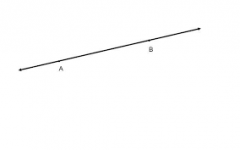
A line contains at least two points. |
|
|
Postulate 7 |
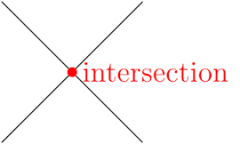
If two lines intersect, then their intersection is exactly one point. |
|
|
Postulate 8 |
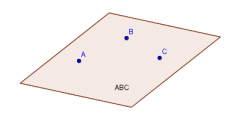
Through any three noncollinear points there exists exactly one plane. |
|
|
Postualte 9 |
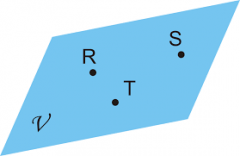
A plane contains at least three noncollinear points. |
|
|
Postulate 10 |
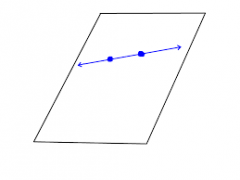
If two points lie in a plane, then the line containing them lies in the plane. |
|
|
Postulate 11 |
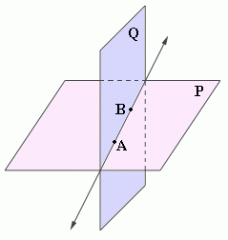
If two planes intersect, then their intersection is a line. |
|
|
Addition Property |
If A=B, then a+c=b+c 6+3=6+3 |
|
|
Subtraction property |
If A=B, then a-c=b-c 10-3=10-3 |
|
|
Multiplication property |
If A=B, then ac=bc 2(3)=2(3) |
|
|
Division property |
If A=B and c does not equal 0, then a/c=b/c 6/3=6/3 |
|
|
Substitution property |

If a=b, then a can be substituted for B in any equation or expression. |
|
|
Distributive property |
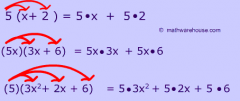
a(b+c)=ab+ac, where a b and c are real numbers |
|
|
Reflexive property |
a=a 7=7 |
|
|
Symmetric property |
if a=b, then b=a 7=7, 7=7 |
|
|
Transitive property |
a=b and b=c, then a=c 7=7=7 |
|
|
Congruence of Segments |
Segment congruence is reflexive, symmetric, and transitive. Reflexive: AB is congruent to AB Symmetric: If AB is congruent to CD, then CD is congruent to AB Transitive: If AB is congruent to CD and CD is congruent to EF, then AB is congruent to EF. |
|
|
Congruence of Angles |
Angle congruence is reflexive, symmetric, and transitive. Reflexive: angle A is congruent to angle A Symmetric: angle A is congruent to angle B, then angle b is congruent to angle A Transitive: angle a is congruent to angle b and angle b is congruent to angle c then angle a is congruent to angle c |
|
|
Right Angles Congruence Theorem |

All right angles are congruent. |
|
|
Congruent supplements theorem |
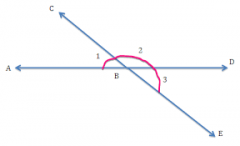
If two angles are supplementary to the same angle, then they are congruent. |
|
|
Congruent complements theorem |
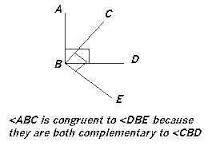
If two angles are complementary to the same angle, then they are congruent. |
|
|
Linear Pair Postulate |
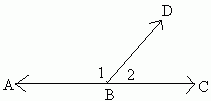
If two angles form a linear pair, then they are supplementary. |
|
|
Vertical angles congruence theorem |
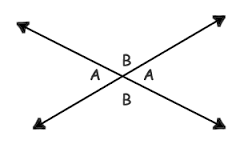
Vertical angles are congruent. |

